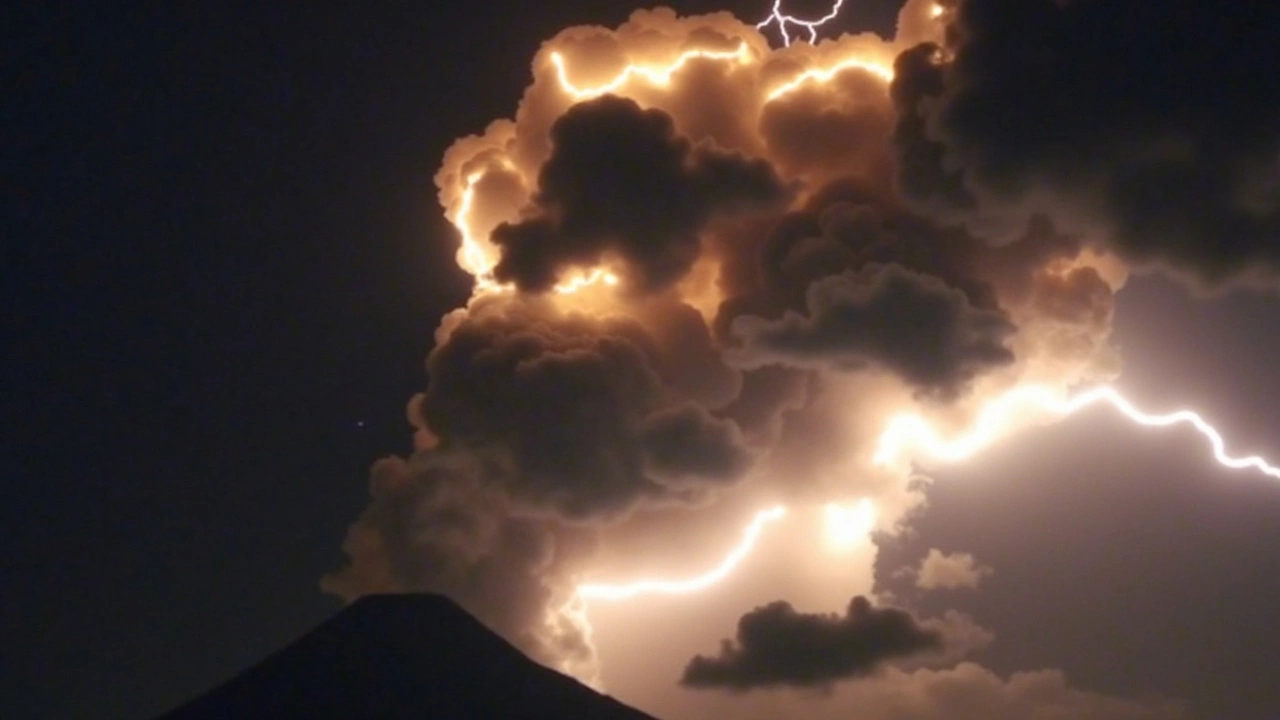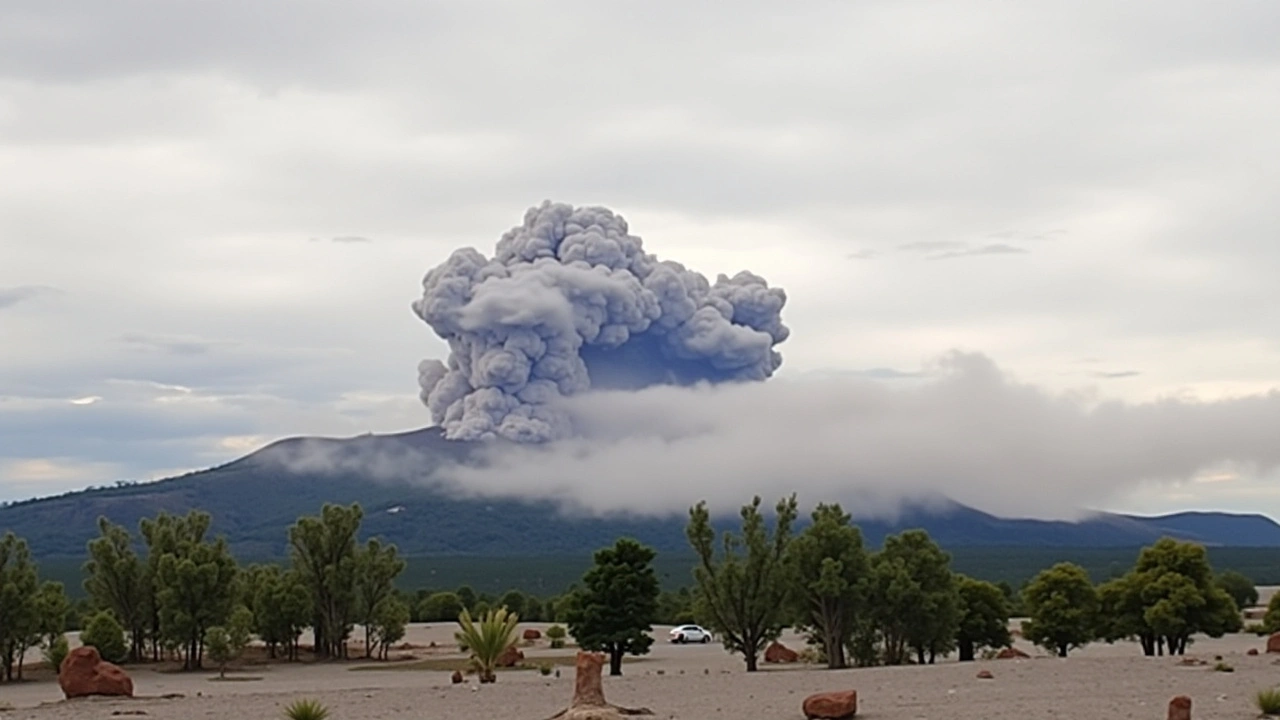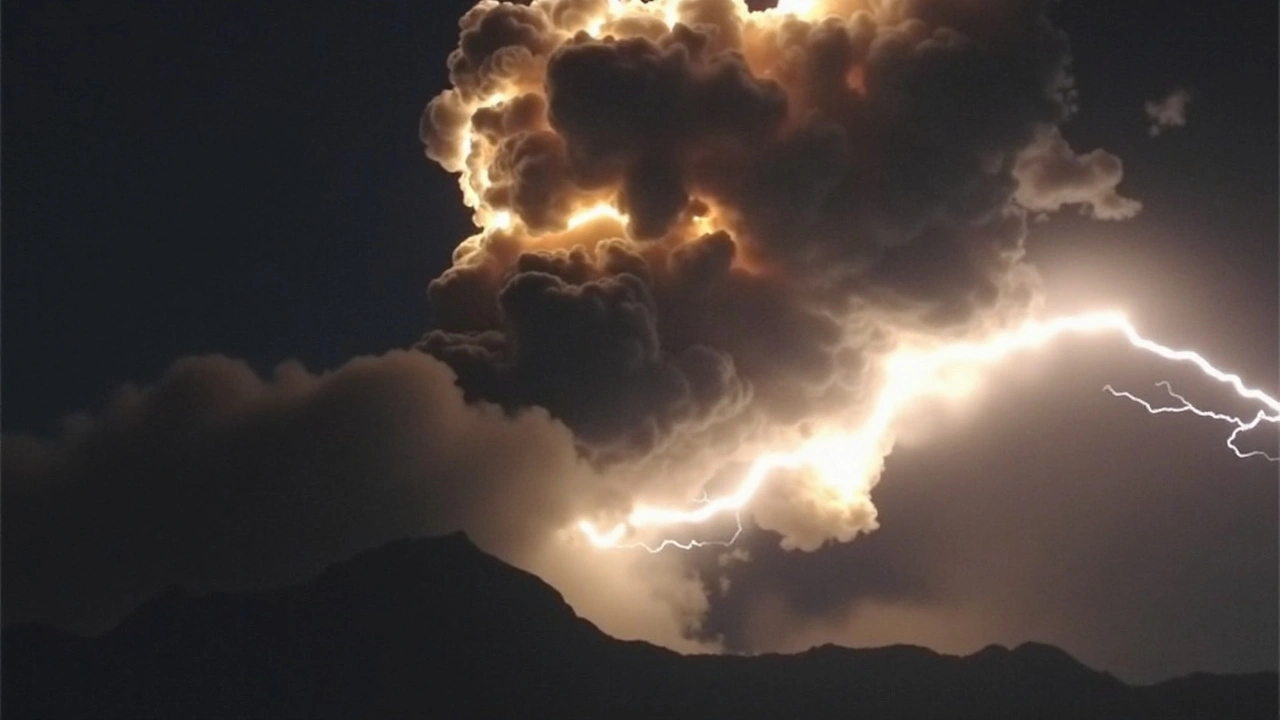Massive 7.0 Earthquake Sets Off Volcanic Eruption, Aviation Ash Cloud Alert Issued

7.0 Magnitude Earthquake Rocks Region, Causes Volcanic Eruption
In a dramatic display of the Earth's powerful geological forces, a massive earthquake with a magnitude of 7.0 has struck, simultaneously triggering a volcanic eruption. The earthquake's epicenter, located just beneath the surface, has caused substantial damage to infrastructure and disrupted daily life for those in the affected areas. This seismic event underscores the instability of this geologically active region, where tectonic plates frequently shift, causing earthquakes and volcanic activity.
The immediate aftermath of the quake was chaotic, with buildings shaking violently, roads cracking, and people scrambling for safety. Emergency services were quickly deployed to assess the damage and assist those in need. Initial reports indicate that several structures have been severely damaged, and there have been injuries reported, although the full extent of the casualties is yet to be confirmed. Rescue teams are working tirelessly to reach those trapped under the rubble and to provide medical assistance to those injured.
Volcanic Eruption and Ash Cloud Warning for Aircraft
The earthquake's incredible power triggered a nearby volcano to erupt, spewing ash and volcanic gases into the atmosphere. This eruption has resulted in the formation of an ash cloud, which has been carried by the wind across a broad area. An urgent warning has been issued to aircraft operating in the vicinity, as volcanic ash poses a severe threat to aviation safety. When ingested by aircraft engines, volcanic ash can cause significant damage, leading to engine failure and other catastrophic consequences.
Air traffic controllers have rerouted numerous flights to avoid the ash cloud, and several airports have been temporarily closed as a precaution. Airlines are advising passengers to check with their carriers for the latest updates on flight schedules and delays. The aviation industry is acutely aware of the dangers posed by volcanic ash, having learned painful lessons from past incidents where ash clouds led to near disasters.

Monitoring and Response Efforts
Local authorities and geological experts are closely monitoring the volcano's activity and the dispersal of the ash cloud. Sophisticated monitoring equipment, including satellite imagery and ground sensors, are being utilized to track the movement of the ash and to measure the levels of volcanic gases being released. This data is crucial for forecasting the ash cloud's trajectory and for issuing timely warnings to both the aviation industry and the general public.
In addition to the immediate response to the earthquake and volcanic eruption, experts are conducting assessments to determine the risk of further seismic activity and potential secondary eruptions. The region's residents have been advised to stay indoors and to keep windows and doors shut to avoid inhaling ash particles. Distribution centers have been set up to provide face masks and other protective gear to those in affected areas.
Geological Instability and the Need for Preparedness
This recent series of events highlights the persistent geological instability of the region. Tectonic activity is a constant threat, and the potential for earthquakes and volcanic eruptions necessitates ongoing preparedness measures. Authorities are urging residents to have emergency kits ready and to be aware of evacuation routes and safety protocols. Public awareness campaigns are being launched to educate people on how to respond during earthquakes and volcanic eruptions.
Experts emphasize the importance of building infrastructure that can withstand seismic activity. Engineering solutions, such as earthquake-resistant buildings and robust transportation networks, are essential for minimizing damage and ensuring public safety. Investments in early warning systems and disaster response capabilities are also critical components of a comprehensive preparedness strategy.

Community Support and Resilience
In the face of such a daunting natural disaster, the strength and resilience of the affected communities are truly remarkable. Neighbors are coming together to support one another, sharing resources and providing comfort during this challenging time. Humanitarian organizations are on the ground, delivering aid and support to those in need, and helping to coordinate the recovery efforts.
Despite the immediate hardships, the long-term recovery process will require a sustained effort from both local and national authorities, as well as from the international community. This earthquake and volcanic eruption serve as a stark reminder of the power of nature and the importance of preparedness, resilience, and community support in the face of such challenges.
Earth's mood swings are wild.
Seeing the ground rip open reminds us how fleeting our routines are.
While we chase daily chores, the planet decides to rewrite the script.
It's a humbling cue to appreciate the present moment.
Sometimes the most powerful forces are invisible until they erupt.
Take a breath and let that perspective settle your nerves.
True, staying calm helps. If you have a mask, wear it right away to keep ash out of your lungs.
Keep windows closed and use a damp cloth for any ventilation needed.
We all feel the tremor in our bones and the sky turns gray we keep moving forward together stay safe stay strong
yup we gotta stick together even if the streets r cracked and the air is thick we can help each othr get safe
Never wonder why the news stays silent on the shadowy cabals that profit from disaster.
The quake and eruption were no accident; it's a staged distraction to push emergency contracts.
Those power brokers have been waiting for a perfect excuse to tighten control over the region's resources.
Don't be fooled by the official statements; look deeper and question the narrative.
Strategic geo‑political manipulation confirmed: seismic‑volcanic coupling leveraged for geopolitical leverage without due diligence
The original article contains a misplaced comma after "volcanic eruption" and inconsistently uses British spelling for "civilisation" while otherwise employing American English. Such inconsistencies detract from credibility.
The way the earth moves in that moment is a reminder of how tiny our human dramas feel against the backdrop of planetary forces.
When the ground shudders, it carries with it the stories of generations who have lived, loved, and lost in that same soil.
People rush to safety, but the ash clouds also carry the silent prayers of those who watch from distant hills.
Rescue teams become the unsung heroes, threading through rubble with a resolve that seems almost mythic.
Each shattered building is a canvas of loss, yet also a testament to the resilience that rebuilds later.
Volcanic ash may darken the sky, but it also fertilizes the earth, promising future growth after the devastation.
The alert to pilots is a stark example of how interconnected our modern world is, where a single eruption can halt global travel routes.
Communities band together, sharing food, water, and blankets, demonstrating that solidarity often shines brightest in darkness.
Even the best‑prepared infrastructure can be humbled, reminding engineers to design with humility and foresight.
Local authorities distributing masks show proactive care, but the real protection comes from shared knowledge and calm action.
International aid organizations rush in, their presence a reminder that humanity can rally beyond borders.
Children watch the clouds of ash and learn a harsh lesson about the planet's power, imprinting caution for their futures.
Media coverage oscillates between stark statistics and human-interest stories, each angle essential for a full picture.
Scientists monitor seismic activity with satellite eyes, turning data into early warnings that may one day prevent tragedy.
In the end, each survivor's story becomes part of the collective memory that fuels better preparedness.
And as the ash settles, the land slowly heals, preparing for the next chapter of life to unfold.
Thanks for that sweeping overview! I’d add that the emergency kits should also include a portable air purifier to mitigate fine ash inhalation.
Also, keep your phone charged; communication lines are often the first to go down.
The magnitude listed as 7.0 is correct; however, the depth was 12 km, not 20 km as sometimes reported.
Got it, thanks! I’ll spread the word about the correct depth, but watch out for my typo in the next post – I’m still learning the QWERTY layout.
It is incumbent upon us to reflect upon the systemic vulnerabilities exposed by such catastrophes and to advocate for robust policy frameworks.
Policy alone won’t help if implementation lag persists.
Let’s keep the energy up! Share your tips for staying safe, and remember we’re all in this together.
Energy is fine, but let’s not forget that the underlying tectonic stress could have been mitigated with better drilling practices.
Most people ignore the fact that the volcanic ash composition indicates a hidden mineral extraction agenda that benefits only a select elite.
That hidden agenda is the real tragedy, as every cloud of ash carries the weight of exploitation and silence.
When the earth sighs, it reminds us that permanence is a myth; we are merely passing thoughts on a shifting surface.